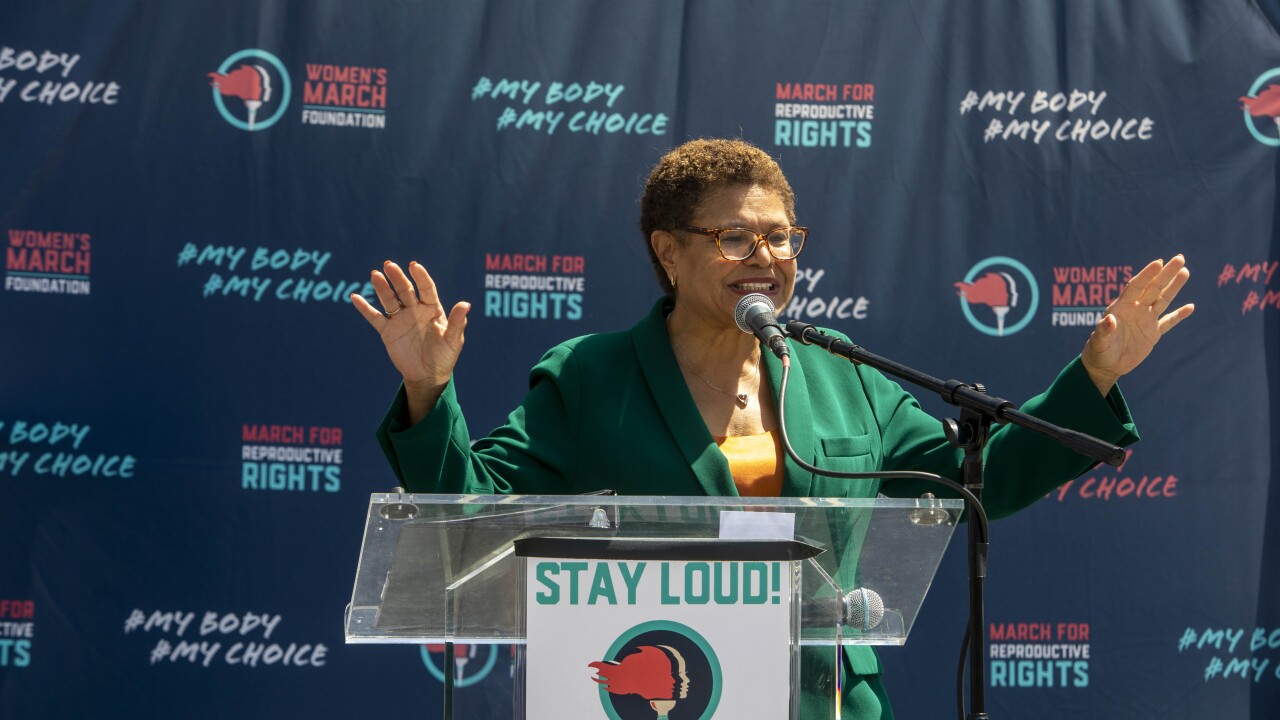The municipal market was unchanged with a slightly weaker tone Friday amid fairly light secondary trading activity.
“We’re mostly flat, but there’s maybe a touch of weakness,” a trader in New York said. “If anything, we’re down a basis point or two, but it’s quiet.”
The Municipal Market Data triple-A 10-year scale rose one basis point Monday to 3.00%, the 20-year was unchanged at 4.28%, and the scale for 30-year bonds climbed one basis point to 4.76%.
“The muni market has changed gears, no longer fixated by the light issuance of 2011 but focusing on a growing primary calendar,” Randy Smolik wrote in the daily MMD commentary. “Plunging muni yields and ratios to taxables have encouraged a round of refunding supply to be scheduled next week.”
In the new-issue market Friday, Bank of America Merrill Lynch priced for retail investors $400.2 million of GO refunding debt for New York City.
The bonds mature in 2011 and from 2014 through 2020, with yields ranging from 1.60% with a 2% coupon in 2014 to 3.35% with a 5% coupon in 2020.
The bonds, which are not callable, are rated Aa2 by Moody’s Investors Service and AA by Standard & Poor’s and Fitch Ratings.
The bonds will be priced for institutional investors Tuesday, when the city will also price another $241.4 million of taxable Series I-2 and I-3 bonds that will refinance variable-rate debt.
Friday’s triple-A muni scale in 10 years was at 86.0% of comparable Treasuries and 30-year munis were at 103.5% according to MMD.
Meanwhile, 30-year tax-exempt triple-A general obligation bonds were at 108.9% of the comparable London Interbank Offered Rate.
The Treasury market was stronger Friday. The benchmark 10-year note finished at 3.49% after opening at 3.56%. The 30-year bond was quoted at 4.60% after opening at 4.62%. The two-year note was quoted at 0.69% after opening at 0.76%.
In economic data released Friday, nonfarm U.S. payrolls increased by 192,000 in February as private sector payrolls jumped by 222,000, while the unemployment rate edged lower to 8.9%.
Total payrolls for January and December were revised higher, adding a combined 58,000 to the work force.
The manufacturing sector added 33,000 for the month with most of the gains coming in durable goods industries.
Construction-sector employment snapped back, adding 33,000 jobs in February after disruptive winter storms in January caused temporary layoffs.
The unemployment rate, at 8.9%, is the lowest since April 2009. The 222,000 gain in private payrolls was the largest since April 2010.
January private payrolls were revised up to a gain of 68,000 from a 50,000 increase reported last month.
Economists expected 178,000 total non-farm payrolls and 185,000 private sector payrolls, according to the median estimate from Thomson Reuters. They expected the unemployment rate to drift up to 9.1%.
Factory orders jumped 3.1% in January on a surge in transportation orders.
Orders excluding transportation increased 0.7% and durable factory orders, excluding transportation goods, fell 3.0% for the month, down for the first time in three months.
January transportation orders jumped 27.3% for the month, the strongest gain since September 2006.
Economists expected factory orders would increase 2.0% for the month, according to the median estimate from Thomson Reuters.





